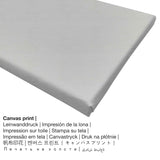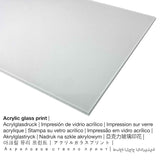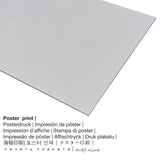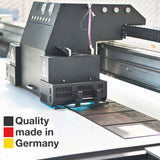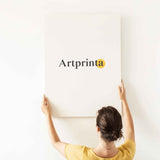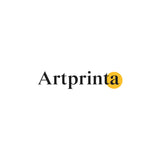Albert Eckhout, 1640 - Ọmụmụ Mbe Brazil abụọ - mbipụta nka mara mma
Ụtụ gụnyere. Mbupu gbakọrọ na ndenye ọpụpụ.
Original artwork information as provided from Mauritshuis (© - Maurithuis - Maurithuis)
Probably Johan Maurits of Nassau-Siegen; Jacques Goudstikker Gallery, Amsterdam (purchase and supposed sale in 1936; cat. 1936-1937, no. 42, as by Anonymous Master; Goudstikker number 3036, inventory of 1936); J.C.H. Heldring, Oosterbeek, 1942-1963 (probably purchased before 10 May 1940; cat. 1955, pp. 32-33, no. 18, as by Anonymous; sale London, Sotheby’s, 27 March 1963, lot 1); Edward Speelman Gallery, London, 1963 (bought at auction for S. Nijstad who worked in commission of the Mauritshuis); purchased by the Friends of the Mauritshuis Foundation, 1963; on long-term loan from the Friends of the Mauritshuis Foundation, since 1963
Ihe nka "Study of Two Brazilian Tortoises" from Albert Eckhout as your unique art copy
Study of Two Brazilian Tortoises was painted by Albert Eckhout in 1640. The work of art had the following size of height: 30,5 cm width: 51 cm | height: 12 in width: 20,1 in. Tempera, gouache on paper on panel was used by the artist as the technique for the piece of art. Nowadays, this piece of art is included in the collection of Maurithuis. The ngalaba ọha work of art is provided with courtesy of Mauritshuis, The Hague. Also, the work of art has the following creditline: Probably Johan Maurits of Nassau-Siegen; Jacques Goudstikker Gallery, Amsterdam (purchase and supposed sale in 1936; cat. 1936-1937, no. 42, as by Anonymous Master; Goudstikker number 3036, inventory of 1936); J.C.H. Heldring, Oosterbeek, 1942-1963 (probably purchased before 10 May 1940; cat. 1955, pp. 32-33, no. 18, as by Anonymous; sale London, Sotheby’s, 27 March 1963, lot 1); Edward Speelman Gallery, London, 1963 (bought at auction for S. Nijstad who worked in commission of the Mauritshuis); purchased by the Friends of the Mauritshuis Foundation, 1963; on long-term loan from the Friends of the Mauritshuis Foundation, since 1963. In addition to that, the alignment of the digital reproduction is in landscape format na a akụkụ ruru nke 16: 9, nke pụtara na ogologo bụ 78% ogologo karịa obosara.
Nye iwu ihe ị ga-achọ ka kpọgidere na mgbidi gị
Maka mbipụta nka ọ bụla anyị na-enye nha & ihe dị iche iche. Anyị na-ahapụ gị ka ịhọrọ nha na akụrụngwa ọkacha mmasị gị n'etiti nhọrọ nhazi ngwaahịa ndị a:
- Mbipụta iko acrylic (nke nwere ezigbo mkpuchi iko): The print on acrylic glass, often referenced as a plexiglass print, changes the artwork into brilliant wall decoration. Above all, the acrylic art print offers a viable alternative option to aluminium or canvas prints. The artwork is being printed with the help of state-of-the-art UV direct print technology.
- Aluminom dibond (ọkpụkpụ ọla): This is a metal print manufactured on aluminium dibond material with a true depth effect. The non-reflective surface structure make a contemporary impression. This print on Aluminum Dibond is the most popular entry-level product and is a stylish way to showcase fine art reproductions, as it puts all of the viewer’s attention on the image.
- Mbipụta kwaaji: The printed canvas, not to be mistaken with an artwork painted on a canvas, is a digital copy printed from an industrial printing machine. Canvas Prints have the advantage of being relatively low in weight. That means, it is quite simple to hang up your Canvas print without extra wall-mounts. Because of thata canvas print is suitable for any kind of wall.
- Akwụkwọ mmado ebipụtara (akwa akwa akwa): Our poster is a UV printed sheet of cotton canvas with a nice texture on the surface. Please bear in mind, that depending on the size of the canvas poster print we add a white margin 2 - 6cm round about the print to facilitate the framing with your custom frame.
Ozi ndabere gbasara onye na-ese ihe
| Ihe nkiri: | Albert Eckout |
| A makwaara dịka: | Albert Eckhout, Eckhout Van Der, Eeckhout Albert van der, Eckhout Albert, Albert van der Eeckhout, Van der Eeckhout Albert, Eeckholt Albert van der, Eckhout Albert van der, Eyckhout Albert van der, Eeckholt Eyckhout Albert, Eeckholt Eyckhout Van Der |
| okike onye nka: | nwoke |
| Nationality: | Dutch |
| Ọrụ: | onye na-ese ihe, onye na-ese ihe |
| Mba onye si: | mba netherland |
| nhazi ọkwa: | nna ukwu ochie |
| Ndụ: | 56 afọ |
| Afọ ọmụmụ: | 1610 |
| Amụrụ na (ebe): | Groningen, Groningen Province, Netherlands |
| Afọ nwụrụ: | 1666 |
| Nwụrụ na (ebe): | Groningen, Groningen Province, Netherlands |
Tebụl nka nka
| Aha nke ọrụ nka: | "Study of Two Brazilian Tortoises" |
| Nhazi nka nka: | sere |
| Okwu mkpokọta: | nka ochie |
| Nhazi oge: | 17th narị afọ |
| Afọ okike: | 1640 |
| Afọ nka: | ihe karịrị afọ 380 |
| Agba na: | tempera, gouache on paper on panel |
| Akụkụ izizi (ọrụ nka): | elu: 30,5 cm obosara: 51 cm |
| Ụlọ ihe ngosi nka: | Maurithuis |
| Ebe ngosi nka: | Hague, South Holland, Netherlands |
| Weebụsaịtị nke ihe ngosi nka: | Maurithuis |
| Ụdị nka nka: | ngalaba ọha |
| Site n'aka: | Maurithuis, Hague |
| Ebe E Si Nweta: | Probably Johan Maurits of Nassau-Siegen; Jacques Goudstikker Gallery, Amsterdam (purchase and supposed sale in 1936; cat. 1936-1937, no. 42, as by Anonymous Master; Goudstikker number 3036, inventory of 1936); J.C.H. Heldring, Oosterbeek, 1942-1963 (probably purchased before 10 May 1940; cat. 1955, pp. 32-33, no. 18, as by Anonymous; sale London, Sotheby’s, 27 March 1963, lot 1); Edward Speelman Gallery, London, 1963 (bought at auction for S. Nijstad who worked in commission of the Mauritshuis); purchased by the Friends of the Mauritshuis Foundation, 1963; on long-term loan from the Friends of the Mauritshuis Foundation, since 1963 |
Nkọwa akụkọ ahaziri ahazi
| Bipụta ngwaahịa: | nka nka |
| Usoro mmeputakwa: | dijitalụ mmeputakwa |
| Usoro mmepụta: | UV kpọmkwem obibi |
| Production: | emere na Germany |
| Ụdị ngwaahịa: | mmepụta ihe na-achọ |
| Ngwaahịa were: | nchịkọta nka (mmeputakwa), ihe ndozi ụlọ |
| Nhazi onyonyo: | nhazi odida obodo |
| Oke akụkụ: | 16: 9 (ogologo: obosara) |
| Ntụgharị nkọwa akụkụ akụkụ: | ogologo bụ 78% ogologo karịa obosara |
| Ngwa ngwaahịa dị: | acrylic glass print (nwere ezigbo mkpuchi iko), mbipụta akwụkwọ mmado (akwụkwọ kwaaji), mbipụta ọla (aluminium dibond), mbipụta akwụkwọ. |
| Mbipụta kanvas (akwa akwa n'elu etiti ihe ndọtị) ụdị nha dị iche iche: | 90x50cm - 35x20", 180x100cm - 71x39" |
| Mbipụta iko acrylic (nwere ezigbo mkpuchi iko) nhọrọ nha: | 90x50cm - 35x20", 180x100cm - 71x39" |
| Nhọrọ nke mbipụta akwụkwọ mmado (akwụkwọ kwaaji): | 90x50cm - 35x20" |
| Nhọrọ nha nke mbipụta aluminom (aluminium dibond material) | 90x50cm - 35x20" |
| Nhazi mmeputa nka nka: | enweghị etiti |
Important legal note: We try our utmost in order to depict our products with as many details as possible and to exhibit them visually in our shop. Still, some tone of the printing material, as well as the printing might differ somehwat from the image on the screen. Depending on your settings of your screen and the nature of the surface, not all color pigments will be printed as realistically as the digital version. Given that all the art prints are processed and printed by hand, there might as well be minor discrepancies in the motif's exact position and the size.
Ederede a bụ ikike ọgụgụ isi ma chekwaa ya site na nwebisiinka © - Artprinta.com (Artprinta)


